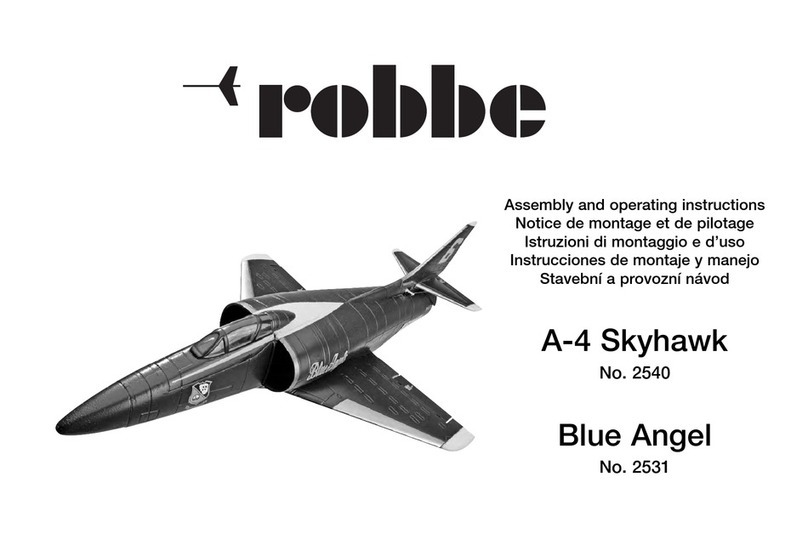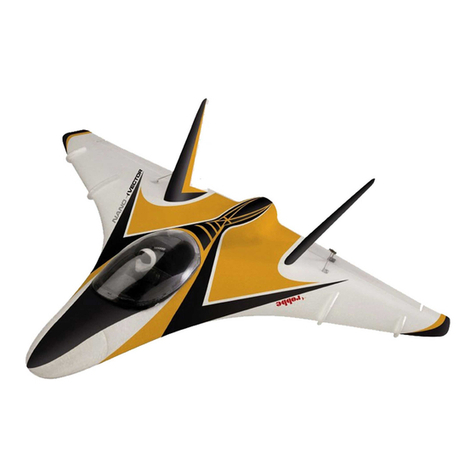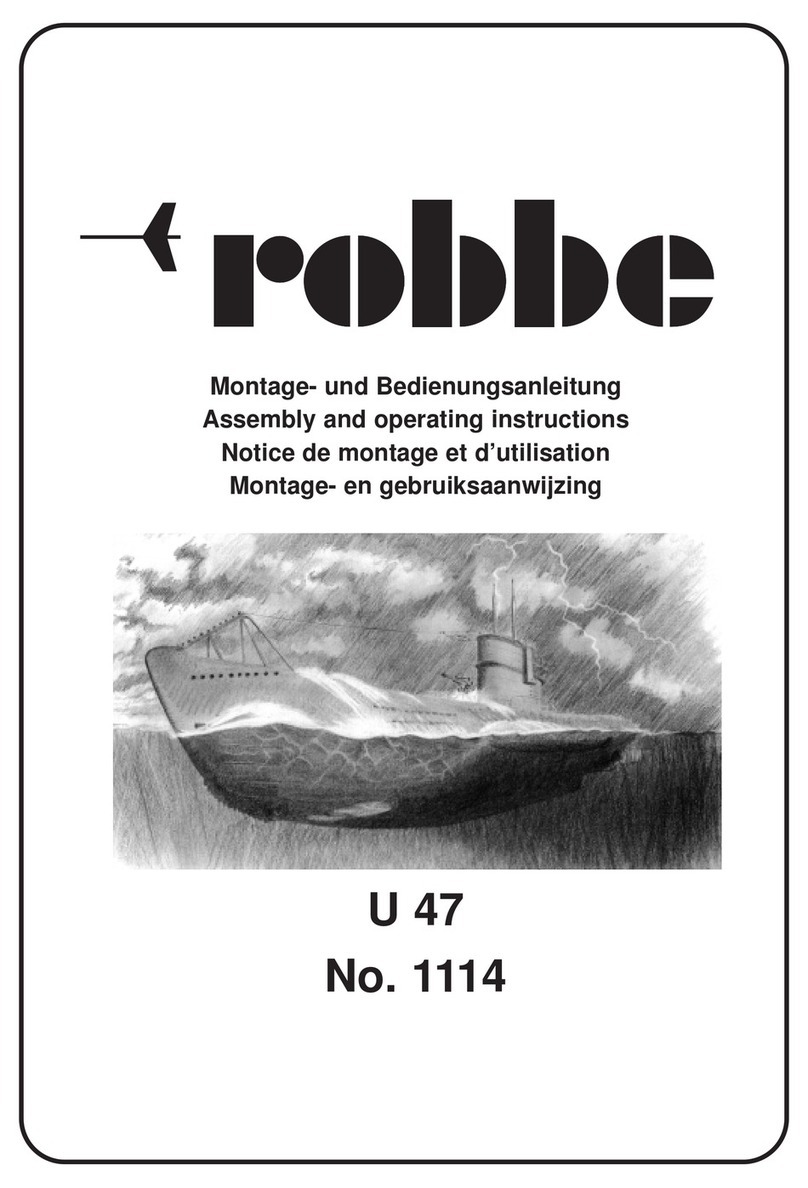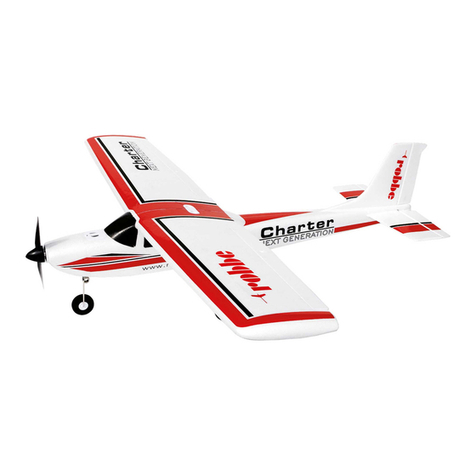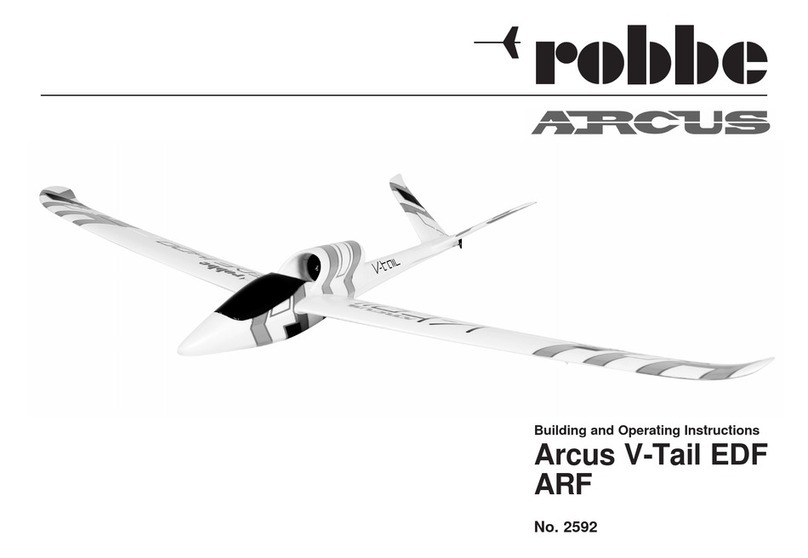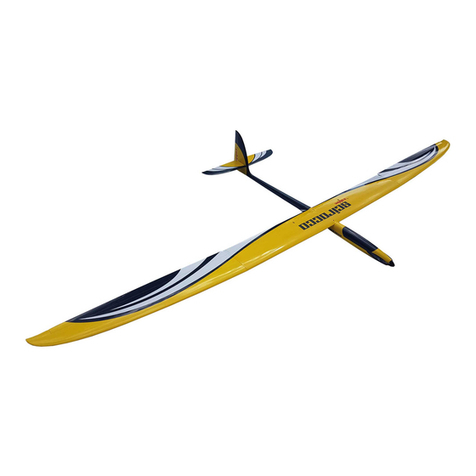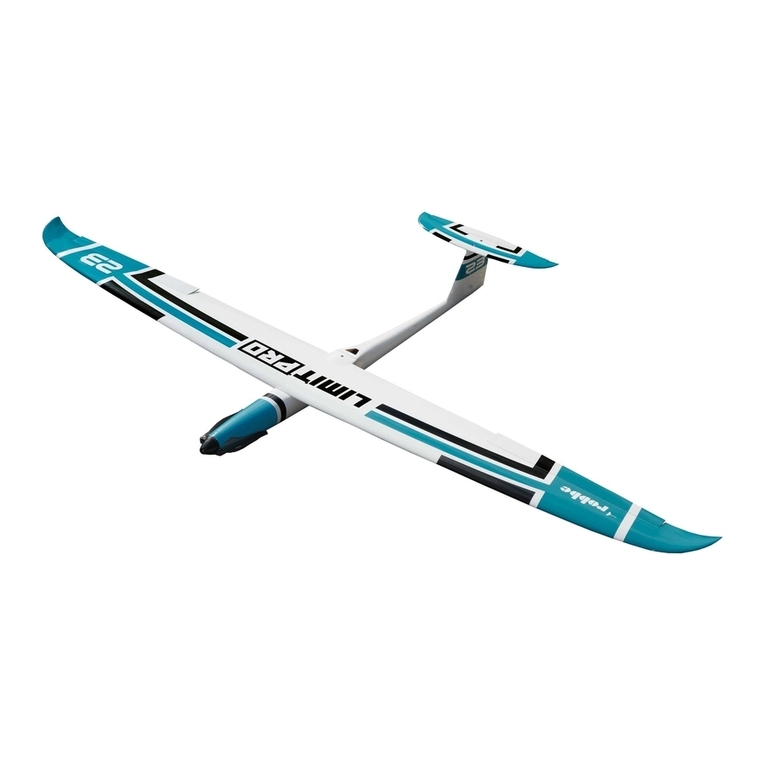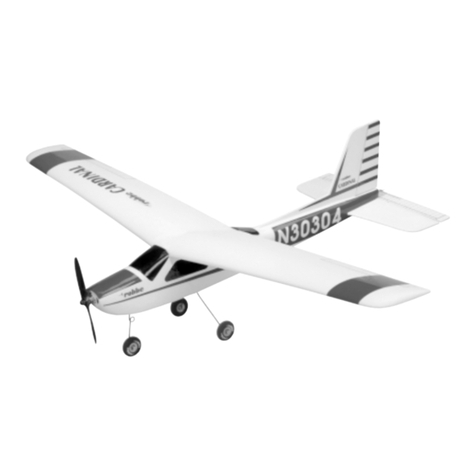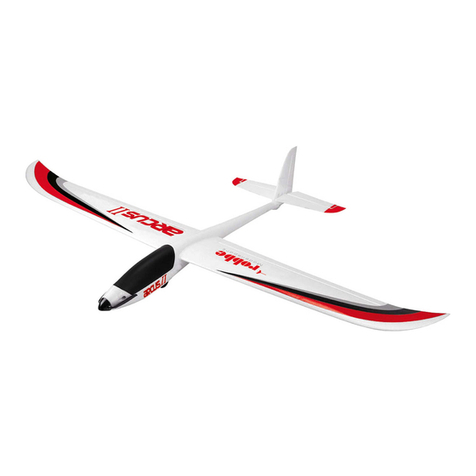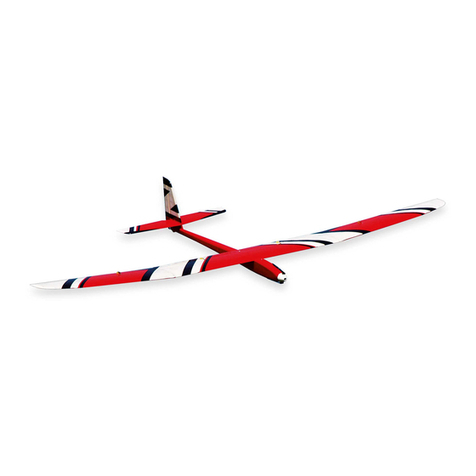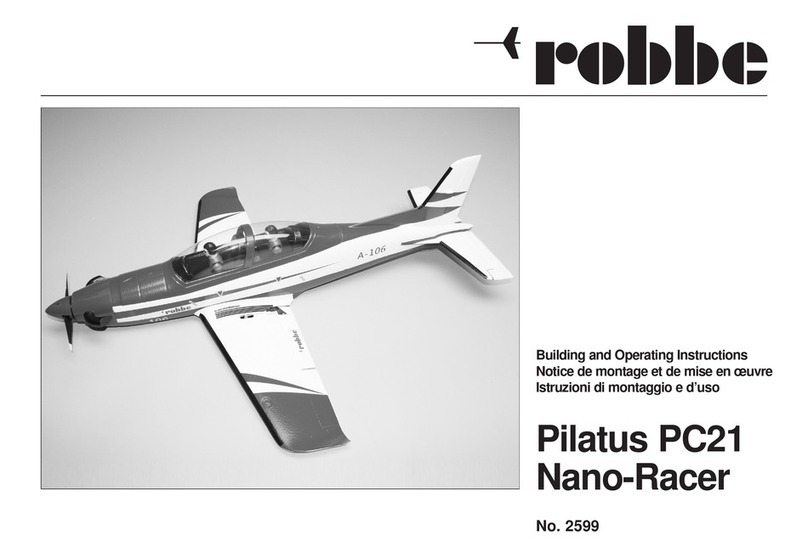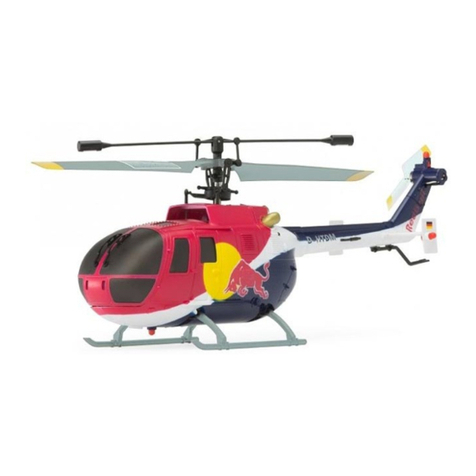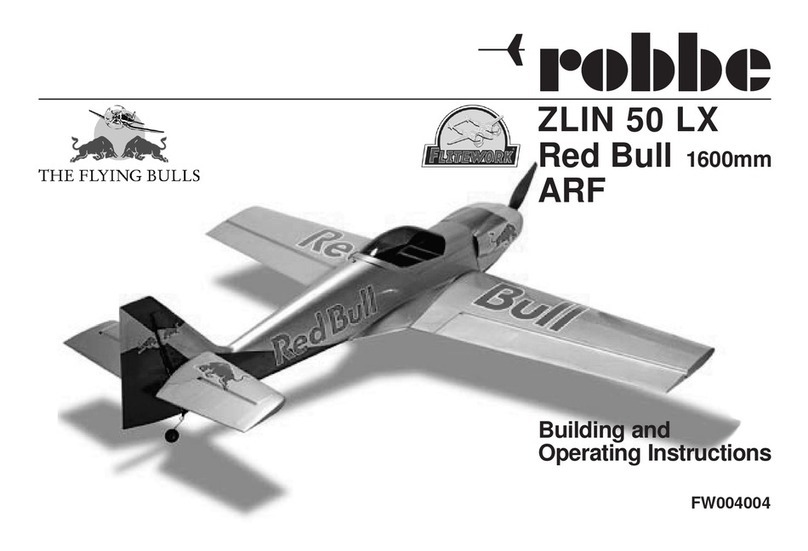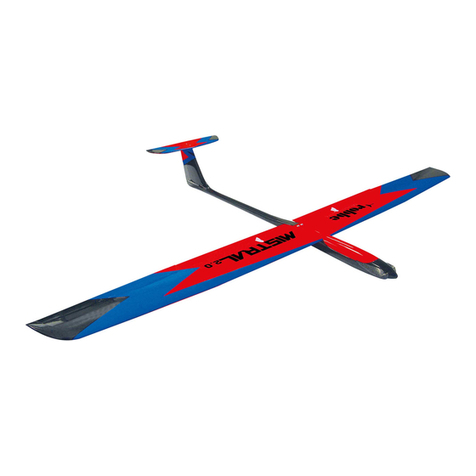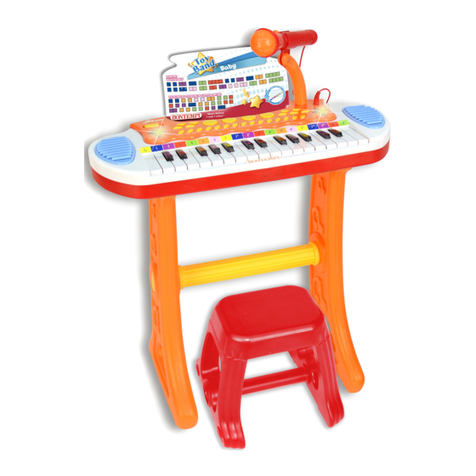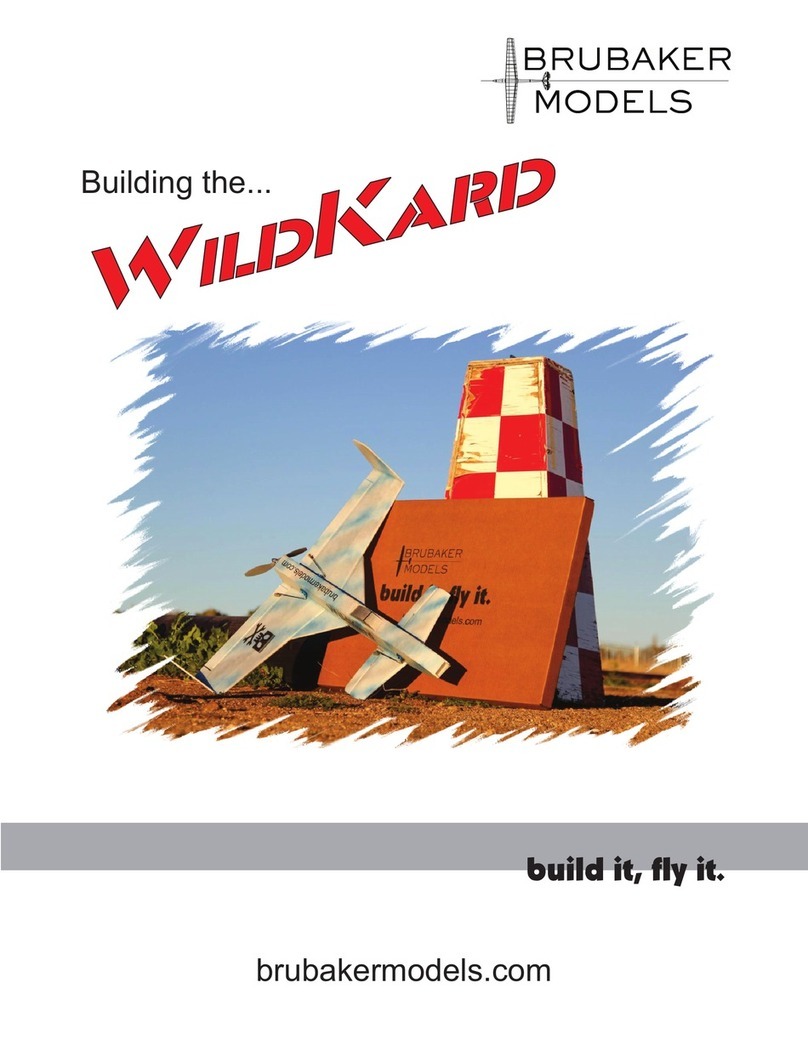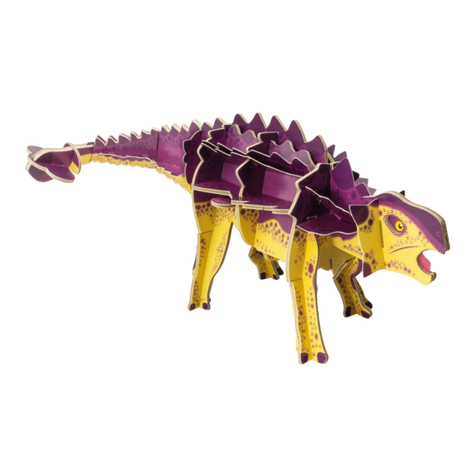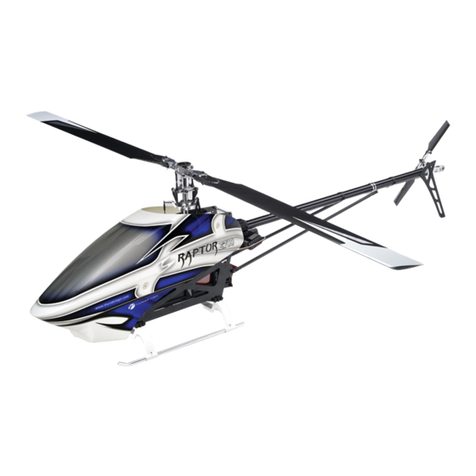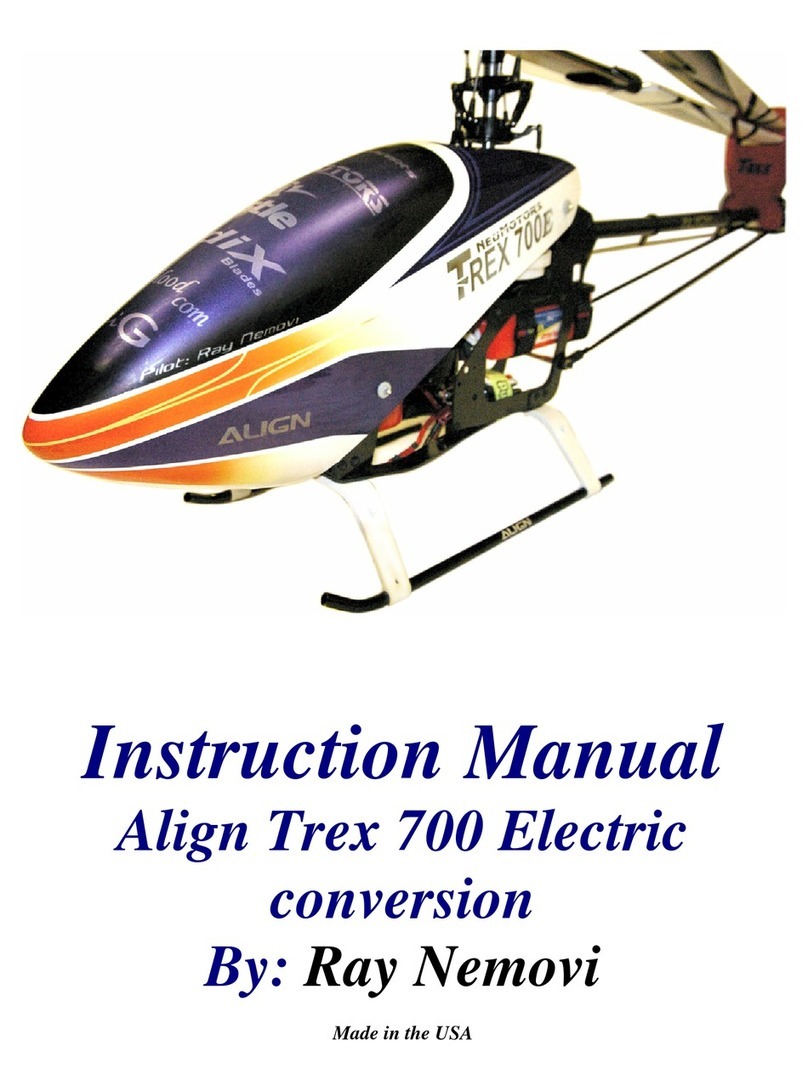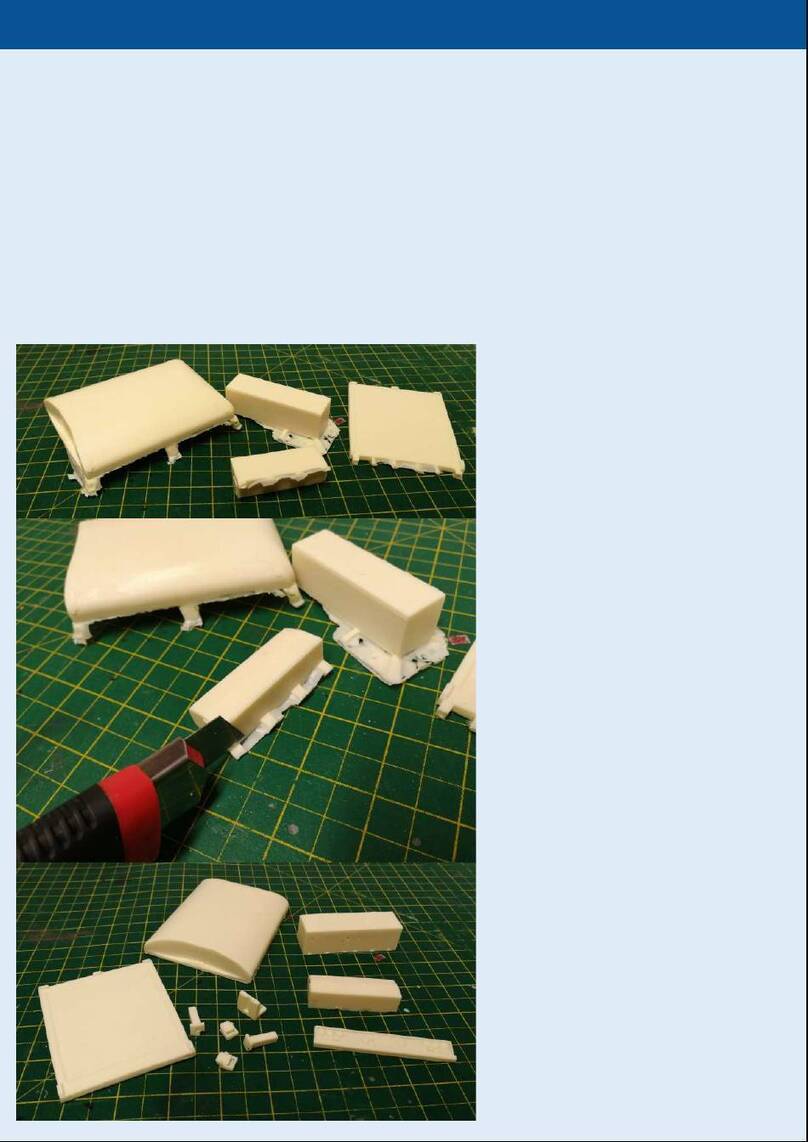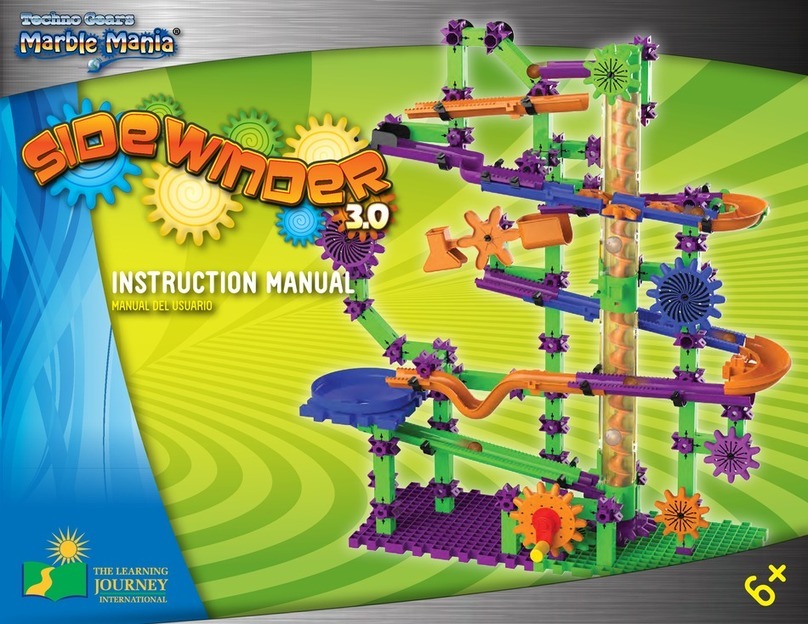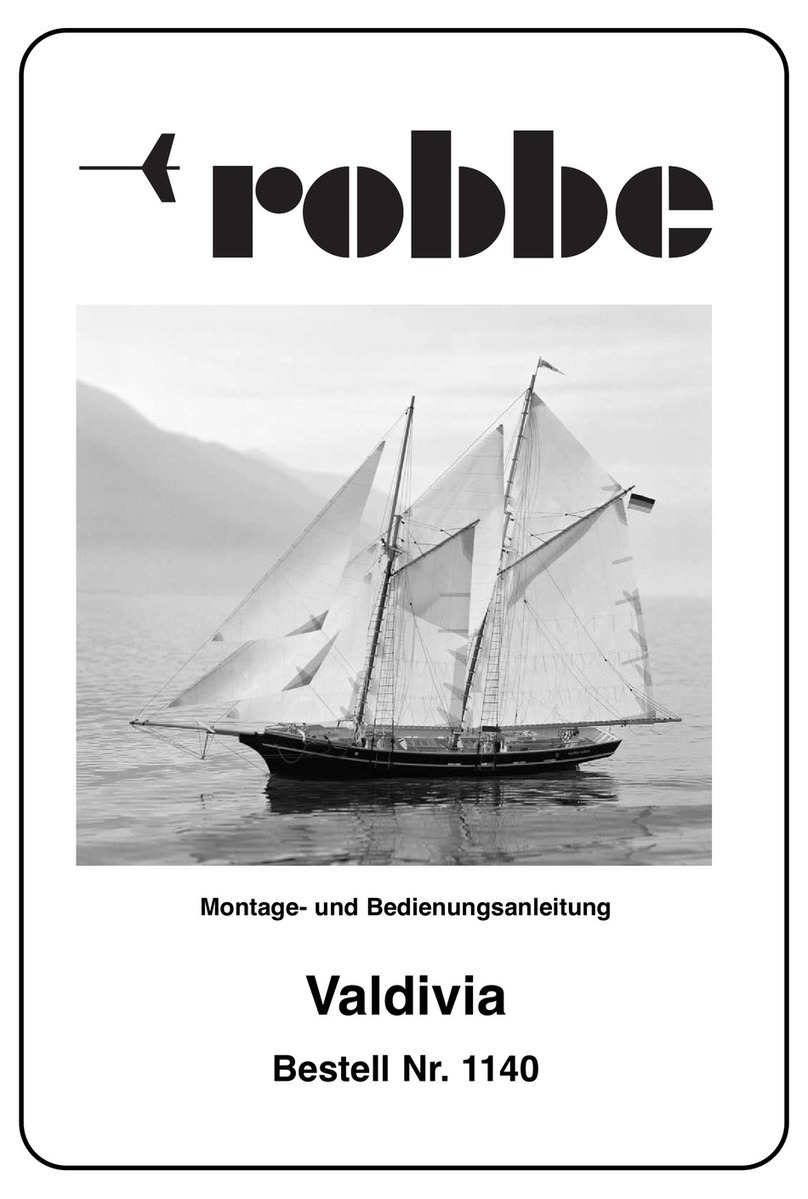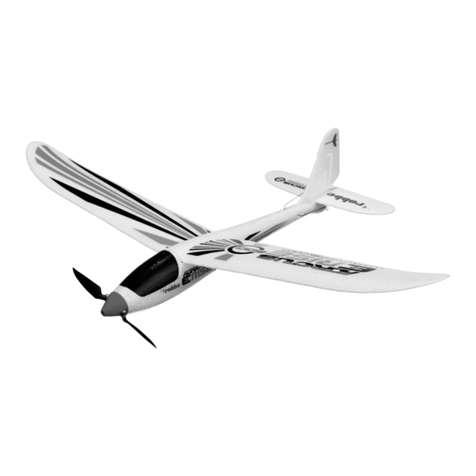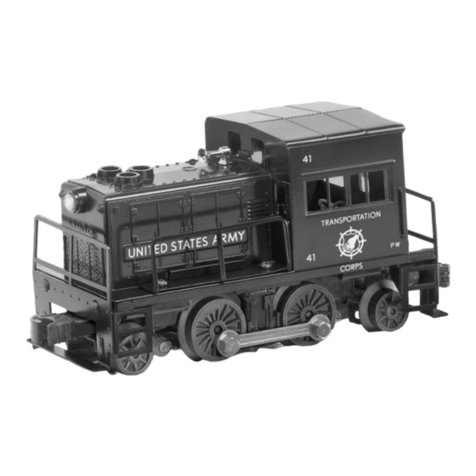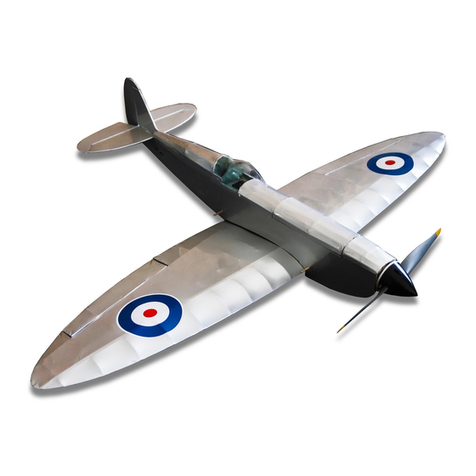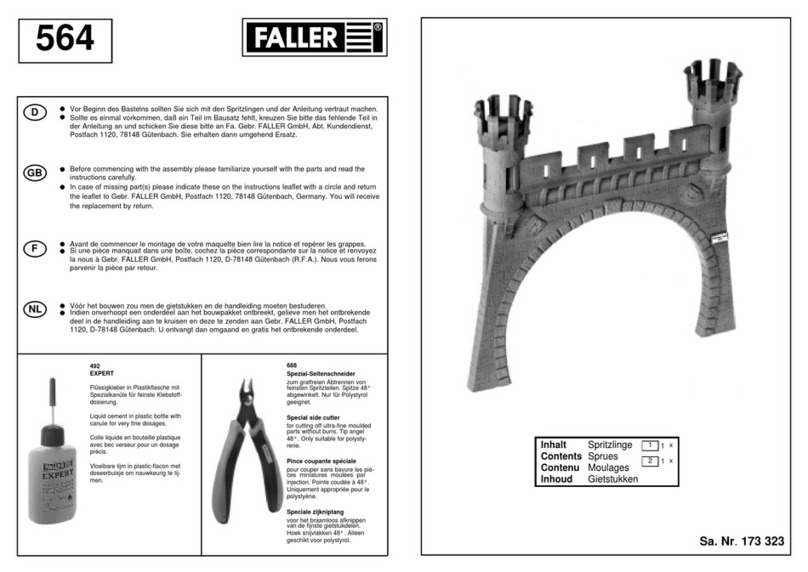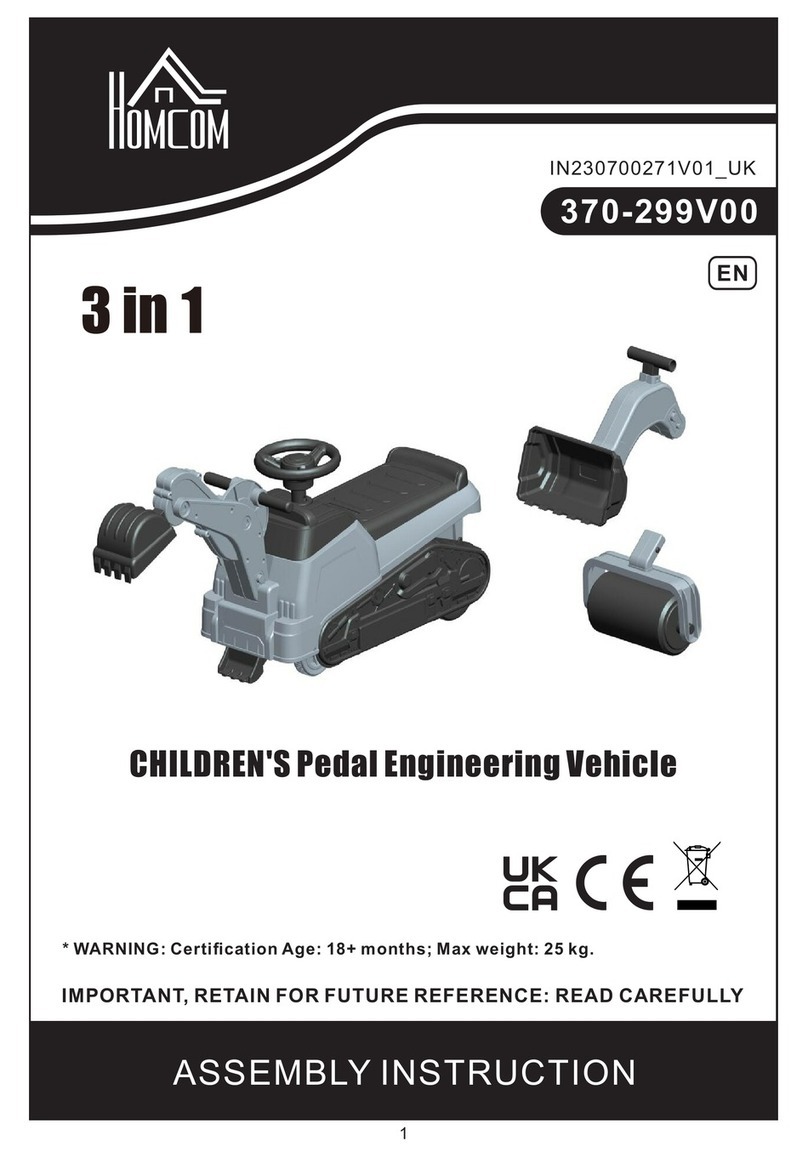Geier ARF
16
Bauanleitung, Assembly instructions, Notice de montage
3014
No.
- Haltewinkel 5.1 anfertigen. Gestänge
5.2 mit einer Z-Kröpfung versehen, in
das Führungsröhrchen 5.3 schieben
und im Drosselhebel einhängen.
- Haltewinkel auf das Röhrchen setzen,
Laschen umbiegen, Röhrchen mit
Epoxy fixieren. Haltewinkel mit der hin-
teren Motorschraube befestigen.
- Nach Maßangaben ein Loch Ø 2 mm
durch die Tragfläche bohren.
- Plättchen 5.4 auf das Röhrchen 5.3
schieben. Röhrchen durchstecken,
zweites Plättchen aufschieben. Teile
mit Sekundenkleber fixieren.
- Den Servorahmen 5.5 nach
Servogröße anfertigen, Klötzchen 5.6
und Halteleiste 5.7 aufkleben. Servo
5.8 einbauen. Kreuzhebel beschnei-
den. Servoeinheit so an die Mittelrippe
kleben, daß das Gestänge über dem
Kreuzhebel liegt. Führungsröhrchen
und Gestänge entsprechend kürzen.
- Ein kurzes Z-Gestänge 5.9 anfertigen
und im Kreuzhebel einhängen. Die
Gestänge mit dem Stellring 5.10 mit-
einander verbinden.
- Drossel ganz öffnen, Servo in
Vollgasstellung bringen, Schraube des
Stellrings anziehen.
- Réaliser l’équerre de maintien 5.1
- Munir la tringle 5.2 d’un cintrage en Z, la
glisser dans le tube-guide 5.3 et l’ac-
crocher dans le palonnier des gaz.
- Installer l’équerre de maintien sur le
tube, cintrer les éclisses, fixer le tube
avec de la colle époxy. Fixer l’équerre
de maintien à l’aide de la vis arrière du
moteur. Selon les cotes indiquées,
percer un trou de Ø 2 mm dans l’aile.
- Glisser une plaquette 5.4 sur le tube 5.3.
Enfiler le tube et y glisser la seconde
plaquette. Fixer les éléments avec de la
colle cyanoacrylate.
- Réaliser le châssis du servo 5.5 en fonc-
tion de l’encombrement du servo, coller
la cale 5.6 et la baguette de maintien
5.7. Monter le servo 5.8. Découper le
palonnier en croix comme indiqué.
Coller l’unité du servo sur la nervure
centrale de sorte que la tringle se trouve
au-dessus du palonnier. Raccourcir le
tube-guide et la tringle en conséquence.
- Réaliser une tringle courte en Z 5.9 et
l’accrocher dans le palonnier en croix.
Raccorder les tringles à l’aide de la
bague d’arrêt 5.10. Ouvrir complète-
ment le boisseau, amener le servo en
position plein gaz, serrer la vis sans tête
de la bague d’arrêt.
- Cut the bracket 5.1 to shape.
Form a Z-bend in one end of the
pushrod 5.2, slip it into the snake outer
5.3 and connect it to the throttle arm on
the motor.
- Place the bracket over the snake outer
and bend the lug round it. Epoxy the
tube to the bracket. The bracket is held
in place by the rear motor mounting
screw. Drill a 2 mm Ø hole through the
wing at the stated position.
- Slip one of the plates 5.4 onto the
snake outer 5.3, push the tube through
the hole in the wing and fit the second
plate on the other end. Fix the plates to
the wing with a drop of cyano.
- Cut the servo mounting frame 5.5 to
suit the size of the throttle servo you
wish to use. Glue the block 5.6 and the
retaining strip 5.7 on top, and install
the servo 5.8. Cut down the cruciform
output device as shown, and glue the
servo assembly to the centre rib with
the pushrod located over the output
arm. Shorten the snake outer and the
pushrod to suit. Make up the short
pushrod 5.9 and connect it to the servo
output arm. Connect the two pushrods
using the collet and screw 5.10.
- Open the throttle fully, set the servo to
the full-throttle position, and tighten the
screw in the collet.
33
34
35
36
Baustufe 5, die Motordrossel
Nr. Bezeichnung, Maße in mm Stück
5.1 Haltewinkel 1 n.e.
5.2 Gestänge, Ø 0,8 x 300 1 n.e.
5.3 Führungsröhrchen, Ø 2 x 180 1 n.e.
5.4 Plättchen Ø 15 x 1 2 n.e.
5.5 Servorahmen, 3 x 35 x 70 1 n.e.
5.6 Klötzchen, 10 x 10 x 35 1 n.e.
5.7 Halteleiste, 3 x 5 x 70 1 n.e.
5.8 Drosselservo 1 n.e.
5.9 Z-Gestänge, Ø 1,2 x 30 1 n.e.
5.10 Stellring mit Madenschraube 1 n.e.
Stage 5, throttle system
No. Description, size in mm No. off
5.1 Bracket 1 N.I.
5.2 Pushrod, 0.8 Ø x 300 1 N.I.
5.3 Snake outer, 2 Ø x 180 1 N.I.
5.4 Plate, 15 Ø x 1 2 N.I.
5.5 Servo mounting frame, 3 x 35 x 70 1 N.I.
5.6 Mounting block, 10 x 10 x 35 1 N.I.
5.7 Retaining strip, 3 x 5 x 70 1 N.I.
5.8 Throttle servo 1 N.I.
5.9 Pre-formed pushrod, 1.2 Ø x 30 1 N.I.
5.10 Collet and grubscrew 1 N.I.
Stade 5, la commande des gaz
N° désignation, cotes en mm nbre
5.1 équerre de maintien 1 n.c.
5.2 tringle, Ø 0,80 x 300 1 n.c.
5.3 tube-guide, Ø 2 x 180 1 n.c.
5.4 plaquette, Ø 15 x 1 2 n.c.
5.5 châssis du servo, 3 x 35 x 70 1 n.c.
5.6 cale, 10 x 10 x 35 1 n.c.
5.7 baguette de maintien, 3 x 5 x 70 1 n.c.
5.8 servo des gaz 1 n.c.
5.9 tringle en Z, Ø 1,2 x 30 1 n.c.
5.10 bague d’arrêt avec vis sans tête 1 n.c.
5.1 5.2
5.3
18 mm
60 mm
Ø 2 mm 5.4
5.5
5.6
5.7
5.8
5.9 5.10
5.1 5.4M 1:1
5.2
4.3
5.4





















